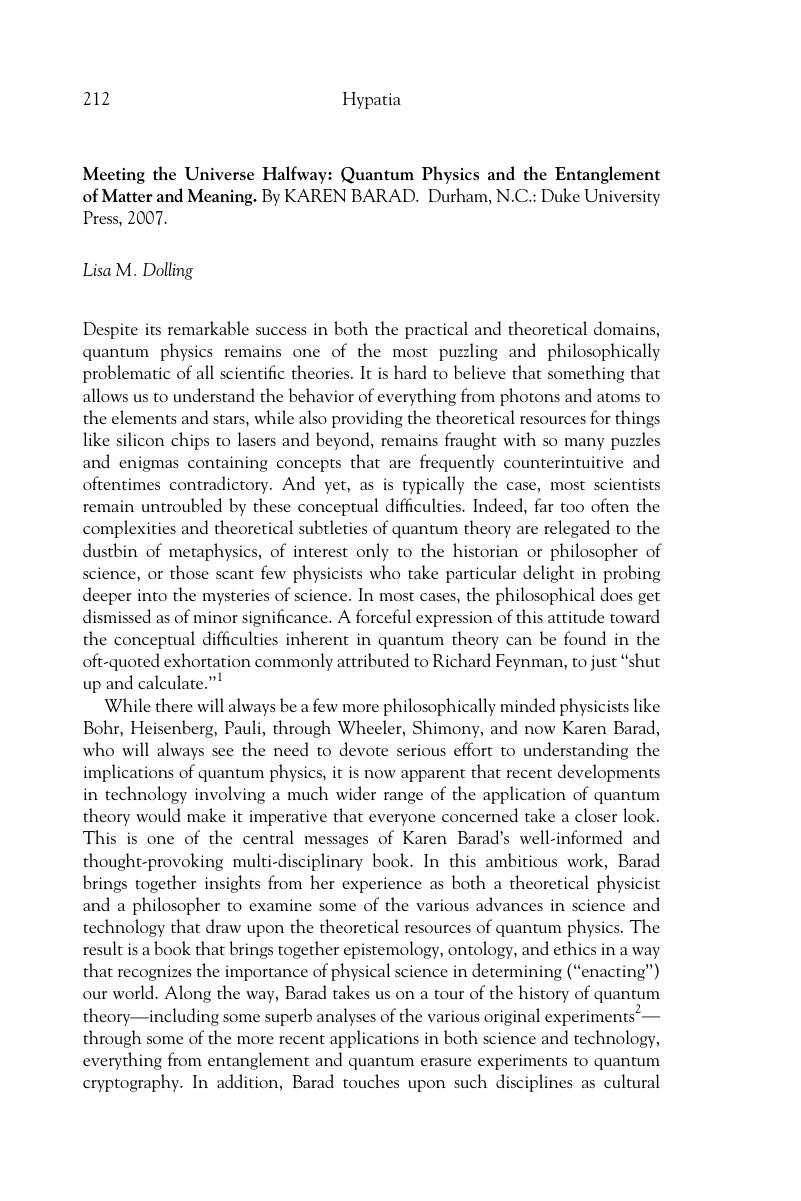Published online by Cambridge University Press: 25 March 2020

1. Some sources attribute this quotation to Paul Dirac as well.
2. Many of the illustrations were drawn especially for this book and include wonderfully clear renderings of the double-slit experiment (and many subsequent variations), the measurement problem, the Stern-Gerlach experiment, as well as various depictions of superposition. I found these remarkably useful in the classroom, especially with physics students who have actually performed the experiments in the lab.
3. I think that while her suggestions are thought-provoking, there are many who would take issue with her emphasis on posthumanism. While it is certainly the case that certain advances in biotechnology have called into question what exactly we mean by “human” (transhumanism, cyborgs, and the like), we might also consider the possibility that we are indeed anthropocentric, and that, borrowing from Richard Rorty, we are frankly so. Clearly, Barad rejects the tradition that would take as inspiration the claim of Bohr's contemporary Carl von Weisäcker that, “Nature is prior to man; but man is prior to natural science.”
4. In an amusing footnote, reinforcing the fact that all too often quantum theory (or what is believed to be the message of quantum theory) is misappropriated, Barad points to the “obvious intuitive appeal and all-too-popular and mistaken invocations of the uncertainty principle, as in ‘of course people will behave differently if you watch them’,” or, as was heard on a 1993 NPR broadcast “Corporate executives are like subatomic particles; their behavior changes when you observe them.”